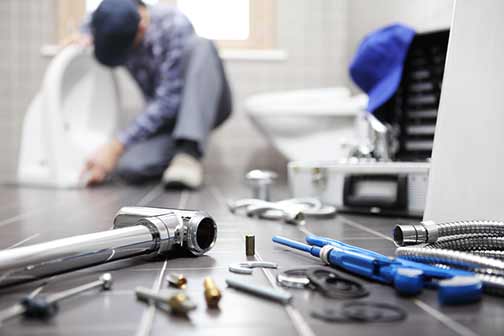
Upgrading your home’s plumbing is one of the best ways to enhance its appearance and increase its market value, says Keyrenter Premier team. New plumbing features are one of the main things buyers consistently say they look for when shopping for a new home.
But plumbing upgrades should not just be about making your home more saleable. They should also be about cutting costs. A good plumbing upgrade should not only make your home more comfortable but should also improve its function.
Question the utility of any plumbing upgrade that does not make the system more resilient, easier to use, and cheaper to manage. If a plumbing upgrade will not help your plumbing do its job better, is it worth it?
Before spending money to install updated plumbing systems in your home, ask how those new features will improve the overall performance of your plumbing. You also want to know how it will impact your home’s water and energy costs.
Water and energy costs make up a huge chunk of your monthly spending. Whatever helps to cut that cost should be embraced. Updating your home’s plumbing is one of the best options for making your home more cost-efficient.
What plumbing updates offer the most benefits in terms of more efficient water and energy usage?
The top plumbing upgrades for water and energy efficiency
This list is divided into three categories: durable leak-free piping, efficient fixtures & appliances, and robust insulation.
Durable leak-free pipes and connections
- Leak-resistant pipes and connections: For pipes that are less vulnerable to leaks because of their ability to withstand stress, you have the following options: PEX pipes (they are flexible and will expand to accommodate freezing water), CPVC pipes (can withstand higher temperatures), and copper pipes (resistant to leaks and corrosion).
- Smart leak detection systems: These devices monitor your plumbing for water leaks. Leak detection systems monitor specific areas of your home for changes in humidity levels or keep an eye on the water pressure and flow rate within your pipes. If the system detects a leak, the device will alert you.
Adequately insulated plumbing systems
- Insulate your pipes: If pipes are uninsulated, the water heater will struggle to maintain the temperature of heated water because of heat loss. Insulated pipes don’t lose as much heat. This will help you drastically reduce the amount of energy used by the water heater. Insulated pipes are also less likely to freeze and burst during winter.
- Insulate the water heater: An uninsulated water heater will work harder to keep the temperature of heated water higher than the ambient temperature. Insulating your water heater creates a barrier between it and the cooler air outside the water heater tank. This will result in massive energy savings.

Energy-efficient fixtures and appliances
- Water-saving faucets and showerheads: Low-flow faucets and showerheads help you save money by eliminating water wastage. While maintaining strong water pressure, a typical low-flow faucet will use around 1.5 GPM (gallons per minute) of water versus the 2.5 GPM used by traditional faucets. Low-flow showerheads also use less water without impairing your shower experience. This is in addition to many of the other cool features that come with these plumbing fixtures.
- Low-flow toilets: Where traditional toilets use as much as 3.6 gallons of water or more per flush, low-flow toilets use as little as 1.28 gallons per flush. What’s more, they do this without sacrificing flushing power. By replacing just one of your older toilet models in your home, you can save up to 13,000 gallons of water in one year.
- Tankless water heaters: Traditional water heaters are designed to hold heated water in their tank. To keep this water at the required temperature, they must reheat it several times throughout the day. This uses up a lot of energy. Tankless water heaters are also known as on-demand water heaters because they do not need to store or reheat water. They deliver the exact amount of hot water you need at a time.
The importance of regular plumbing maintenance
To ensure the long-term efficiency of your upgraded plumbing systems, you need an up-to-date plumbing maintenance program. A well-crafted professional plumbing maintenance plan will contain the following four components.
Early problem detection
Through a system of scheduled inspections, you can detect problems at their early stages before they become major issues.
Prompt problem-solving
All detected problems in the system must be solved swiftly. This helps to reduce the potential impact of problems while also minimizing costs.
Constant plumbing updates
As the features of the plumbing degrade over time and new technologies enter the market, the system must be updated to help it keep pace.
Professional know-how and modern tools
To ensure the reliability of your plumbing maintenance plan, you need a competent plumber to oversee the entire program.
What should you look out for when hiring a plumber to help you craft and implement the plumbing upgrades in your home, along with the subsequent maintenance plan?
You want an experienced local plumber, like Suburban Plumbing Experts, who has lots of satisfied customers who are willing to vouch for them.

